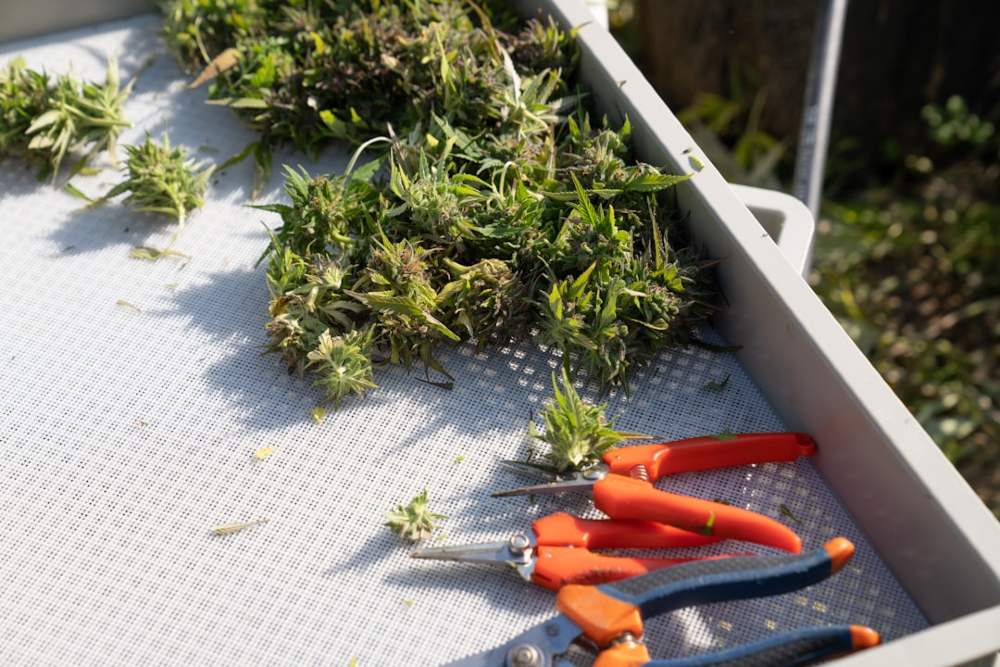Marijuana, also known as cannabis, has been around for centuries. Its history dates back to ancient civilizations, where it was used for medicinal, spiritual, and recreational purposes. From ancient China to medieval Europe, cannabis has played a significant role in various cultures. In modern times, marijuana has become a hot topic of debate, with discussions focusing on its potential benefits and risks.
Science Behind Marijuana
The Chemical Compounds
Marijuana is composed of more than 100 different chemical compounds known as cannabinoids. The most well-known ones are THC (tetrahydrocannabinol) and CBD (cannabidiol). THC is the primary psychoactive component responsible for the “high” sensation, while CBD is non-psychoactive and offers various therapeutic benefits.
Interaction with the Endocannabinoid System
The human body has an endocannabinoid system (ECS) that plays a crucial role in regulating physiological processes such as mood, pain, and appetite. Cannabinoids from marijuana interact with the ECS by binding to receptors (CB1 and CB2) in the brain and immune system, influencing how the body functions and responds to different stimuli.
The Entourage Effect
The entourage effect is a phenomenon where various compounds in marijuana work together to enhance the overall therapeutic effects. This means that the combined action of cannabinoids, terpenes, and flavonoids can be more effective than isolated compounds, offering a more comprehensive approach to utilizing marijuana’s potential benefits.
Medical Uses of Marijuana
Pain Management
One of the most well-known medical applications of marijuana is pain relief. Studies have shown that cannabinoids can effectively manage chronic pain conditions, such as arthritis, multiple sclerosis, and fibromyalgia. By reducing inflammation and altering pain perception, marijuana offers a natural alternative to traditional pain medications.
Epilepsy and Seizure Disorders
Marijuana has gained significant attention for its potential to treat epilepsy and seizure disorders. CBD, in particular, has been found to reduce the frequency and severity of seizures in patients with conditions like Dravet syndrome and Lennox-Gastaut syndrome. The FDA has even approved Epidiolex, a CBD-based medication, for treating these severe forms of epilepsy.
Mental Health Disorders
Emerging research suggests that marijuana may have therapeutic potential for various mental health disorders, including anxiety, depression, and post-traumatic stress disorder (PTSD). While more studies are needed to understand the full extent of its benefits, many patients report improved symptoms and overall well-being when using marijuana as part of their treatment plan.
Recreational vs. Medical Marijuana
Purpose and Intent
The primary difference between recreational and medical marijuana use lies in the purpose and intent behind consumption. Recreational users seek the psychoactive effects of THC for relaxation, socialization, or simply to enjoy the experience. In contrast, medical users consume marijuana to alleviate symptoms, manage chronic conditions, or improve their quality of life.
Dosage and Potency
Medical marijuana is typically prescribed in controlled dosages to ensure patients receive the appropriate amount for their specific condition. This often involves higher concentrations of CBD and lower levels of THC. Recreational marijuana, on the other hand, can vary widely in potency, with users often seeking higher THC levels for a more intense experience.
Moreover, a hybrid marijuana strain may be more suitable for medical use, while recreational users may prefer a specific strain based on its effects and flavor. Not only does dosage and potency differ between recreational and medical marijuana, but it can also vary greatly among different products and strains.
Legal and Regulatory Differences
The legal framework surrounding marijuana varies significantly between medical and recreational use. While medical marijuana is often regulated and requires a prescription or recommendation from a healthcare professional, recreational marijuana is subject to different laws and restrictions depending on the jurisdiction. Understanding these differences is crucial for responsible and legal consumption.
Myths vs. Facts
Marijuana Is a Gateway Drug
One of the most persistent myths about marijuana is that it serves as a gateway drug, leading users to harder substances. However, scientific evidence does not support this claim. Most marijuana users do not transition to using more dangerous drugs, and other factors, such as social environment and individual predisposition, play a more significant role in substance abuse.
Marijuana Kills Brain Cells
Another common misconception is that marijuana kills brain cells. While excessive use, especially during adolescence, can impact cognitive function and development, moderate and responsible consumption does not cause permanent brain damage. Research even suggests that certain cannabinoids may have neuroprotective properties, potentially benefiting brain health.
Marijuana Is Addictive
While marijuana can be habit-forming, it is not as addictive as substances like nicotine, alcohol, or opioids. Approximately 9% of users may develop a dependency, but this risk is significantly lower compared to other drugs. Understanding the difference between dependence and addiction is essential for dispelling this myth.
Marijuana is a complex and multifaceted substance with a rich history and significant potential for both medical and recreational use. By understanding the science behind its effects, debunking common myths, and navigating the legal landscape, individuals can make informed decisions about their consumption.
Whether you’re a medical patient seeking relief or a recreational user exploring new experiences, marijuana offers a unique opportunity to enhance your well-being and connect with a like-minded community.




